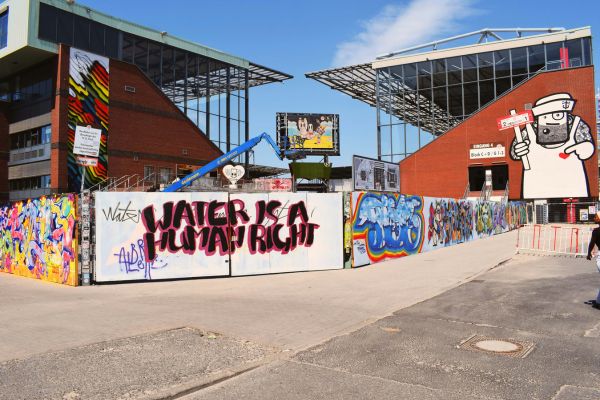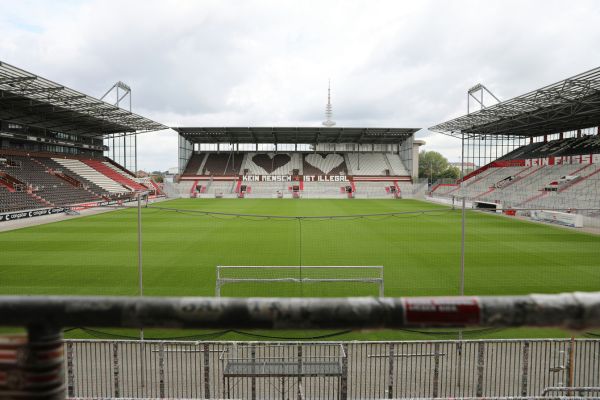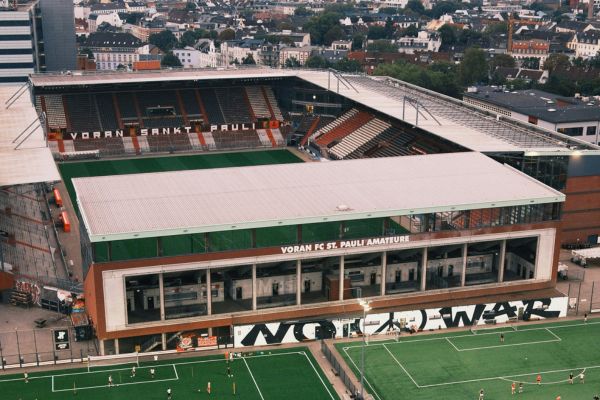Picture this: It’s just before midnight in March 2024, and thousands of FC St. Pauli fans across the globe refresh their screens one last time. Then it happens — €27 million raised. They’ve done it.
Not for a new striker. Not for a fancy training ground. But to buy their stadium.
That’s right. The iconic Millerntor-Stadion is now fan-owned. And this isn’t just some symbolic gesture. We’re talking real, legally binding ownership — bought and paid for with cold, hard cash (€850 a share, to be exact).
Over 21,000 supporters are now proud part-owners of the Millerntor, making this the first fan-led stadium cooperative in football history.
How did we get here?

St. Pauli — the cult club from Hamburg known as much for its punk-rock values as its football — did something no other professional club had done before: launched a fan cooperative. The goal? Sell shares, raise up to €30 million, and use the funds to buy a majority stake in their home ground.
It’s football’s answer to crowdfunding — with a conscience.
Each shareholder got one vote, no matter how many shares they bought. No power grabs. No silent investors. Just democratic control by the people who love the club most.
A bold move in tough times

Why do it? Like many clubs, St. Pauli took a financial hit during the pandemic. Owning their stadium meant they could clear debt faster, secure their future, and keep the Millerntor firmly in fan hands — not those of a faceless landlord.
Even Bayern Munich’s legend Uli Hoeness got involved.
The big debut

In August 2024, when the new Bundesliga season kicked off, St. Pauli fans would be watching from the seats and terraces in which they now have a vested interest.
As one of the cooperative directors put it: "The stadium is now truly the home of the people."
A different kind of football
Here’s the kicker: the co-op doesn’t run the football club. It just oversees the stadium — its usage, rent rates, and non-matchday events. It’s democratic, transparent, and sustainable. In other words, classic St. Pauli.
Could this catch on?
Since the success of St. Pauli’s co-op, Schalke and Union Berlin have launched similar efforts. Maybe fan power is the future — not just in the stands, but on the spreadsheet.
And honestly? I’d love to see it spread further. Especially in the UK, where, unlike Germany’s 50+1 rule (which prevents any single entity from owning more than 49% of a club), fans often have zero say. In England, full private ownership is the norm — and that’s led to clubs being used as financial leverage.
Just look at how some owners have mortgaged clubs against their stadiums — turning community landmarks into collateral. One of the most heartbreaking examples? Wimbledon FC. Poor ownership decisions and short-sighted planning left them homeless. The club was eventually relocated over 90 miles away, renamed, and transformed into something unrecognisable.
Want to know how fans fought back and saved their identity? Read more in our story: The Stadium That Wouldn’t Die — the tale of Plough Lane and the rise of AFC Wimbledon.
